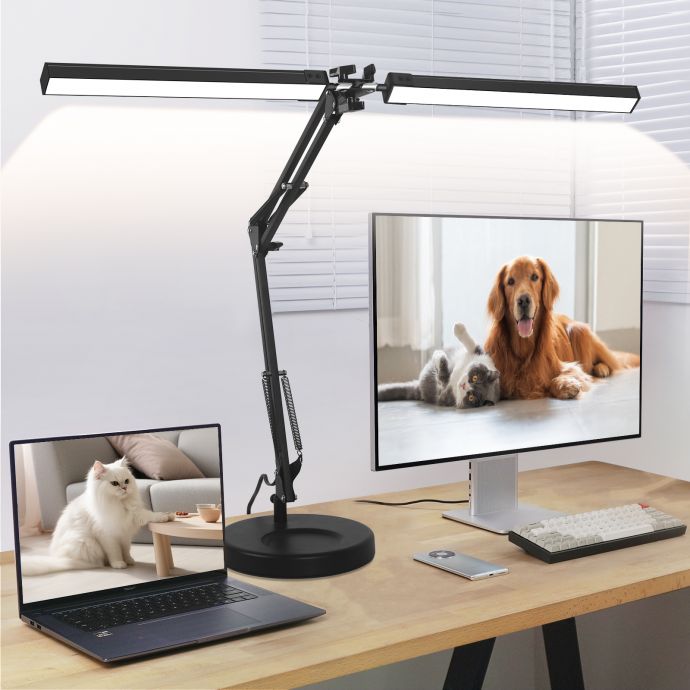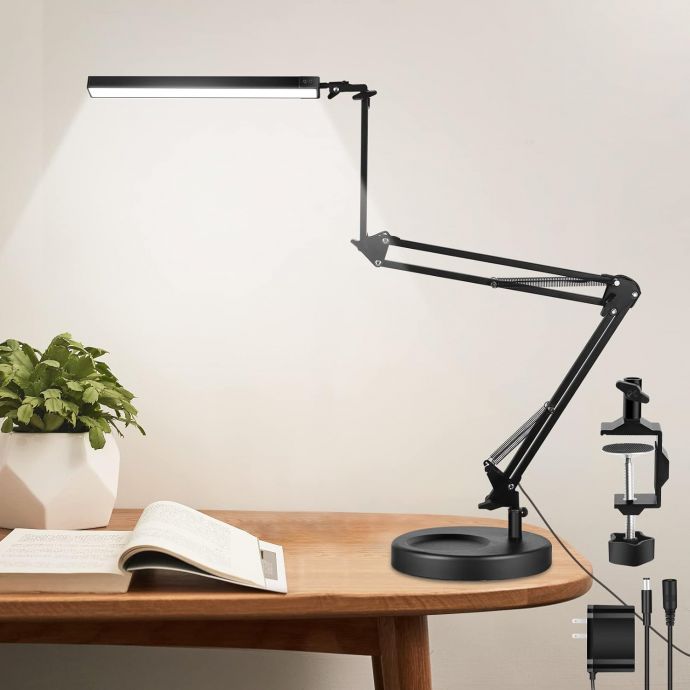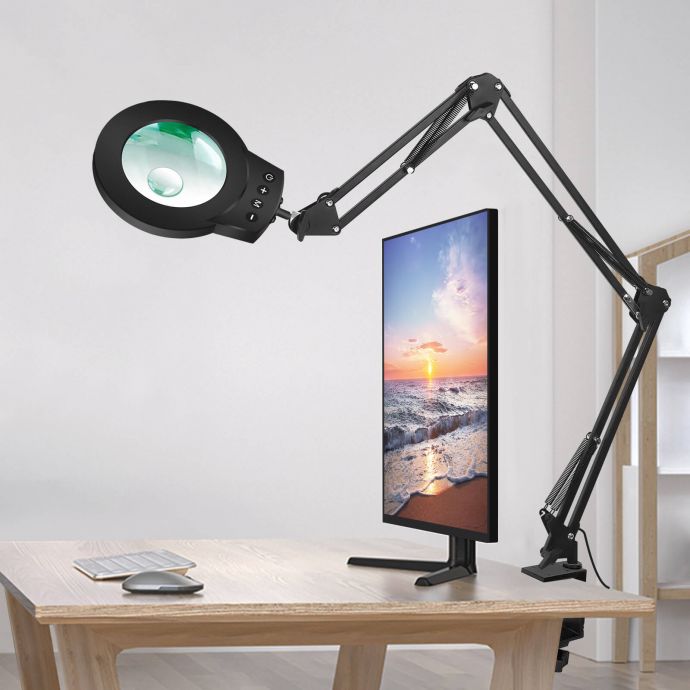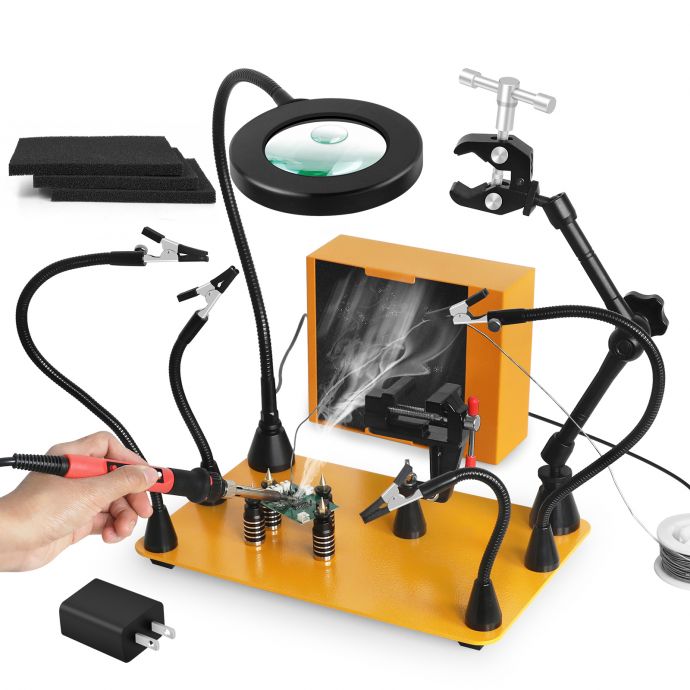In recent years, the do-it-yourself (DIY) trend has gained momentum, captivating hobbyists and professionals alike. From building custom furniture to crafting intricate electronics, the art of creating something with your own hands offers unparalleled satisfaction. However, as many DIY enthusiasts can attest, safety and efficiency must remain top priorities, particularly when undertaking projects involving soldering. This brings us to an often-overlooked yet essential tool for any soldering station: the solder fume extractor.
Soldering is an indispensable skill within the realm of electronics, allowing for the joining of components with precision and reliability. Yet, it also poses potential health hazards. The fumes released during soldering contain a mix of gases and particles, including lead and other harmful substances, which can be detrimental if inhaled over time. Consequently, a solder fume extractor becomes an invaluable ally in preserving both health and work quality.

Crafting a solder fume extractor from scratch is not only an economical option but also an opportunity to tailor the device to your specific needs. Dive into the world of DIY mastery with this comprehensive guide on building the ultimate 6.7 solder fume extractor—a device engineered to keep your workspace clean, safe, and optimal for creativity.
### Understanding the Necessity of a Solder Fume Extractor
Before embarking on the journey of creating your own fume extractor, it's crucial to understand its purpose and benefits. By capturing and filtering harmful smoke and particles, a fume extractor prevents respiratory irritation and long-term health issues. Additionally, maintaining a clear visual field over your work area enhances precision and reduces errors. For those working in confined spaces or on lengthy projects, an effective fume extractor reduces the lingering odor customary to soldering tasks.

### Essential Components and Tools
To construct an efficient solder fume extractor, you’ll need a selection of basic yet crucial components and tools. Here’s a list to get you started:
1. **Fan Units**: High-output fans are the heart of any fume extractor. For this build, consider using a 120mm computer fan with a rating of at least 40 CFM (cubic feet per minute) to effectively pull smoke away from the workspace.

2. **Activated Carbon Filter**: This acts as the primary filtration medium, capturing harmful particles and neutralizing unpleasant odors. Activated carbon is specifically chosen for its adsorptive properties.
3. **Frame Material**: A sturdy, lightweight material such as plexiglass or MDF (medium-density fiberboard) will form the body of the extractor.
4. **Power Supply**: Depending on the fan specifications, a 12V power supply is generally standard. Ensure compatibility with your fan unit.

5. **Switch and Wiring**: Basic electrical components like a toggle switch and appropriate wiring are crucial for integrating power controls.
6. **Screw Fittings and Mounting Brackets**: These are necessary to secure the fan and filter within the assembly.
7. **Basic Tools**: You'll need a drill, screwdriver, wire cutter/stripper, and potentially a soldering iron (ironic, we know) for any electrical connections.

### Step-by-Step Construction Guide
#### Step 1: Designing the Frame
Begin by determining the dimensions of your fume extractor. Typically, a compact design with dimensions around 6.7 inches will balance portability with effectiveness. Use the selected frame material to cut two squares matching the fan size to form the top and bottom bases. Consider adding slotted grooves or cutouts to house and secure the filter efficiently.

#### Step 2: Installing the Fan
With your frame prepared, position the fan onto the top base. Ensure the airflow direction is oriented to draw air from the workspace and outwards. Secure the fan using screw fittings and mounting brackets, ensuring a snug fit to eliminate vibrations during operation.
#### Step 3: Implementing the Filter

Cut the activated carbon filter to size, allowing for a snug fit within the frame. Position it directly behind the fan where the inflow of air will be concentrated. For enhanced filtration, consider layering multiple sheets of carbon filter or adding a HEPA layer before the carbon filter.
#### Step 4: Integrating the Power Components
Attach the power supply, wiring it through the switch and fan unit. Refer to the fan’s wiring diagram to ensure correct connections. The toggle switch should be accessible and mounted securely on the frame. Test the electrical setup before final assembly, verifying that the fan engages and operates smoothly upon power-up.
#### Step 5: Final Assembly and Testing
With all components in place, conduct a trial operation. Test the extractor during a low-stakes soldering session to confirm its efficacy in smoke removal and verify fan function without noises or disruption. Fine-tune as necessary, securing any loose components and adjusting the power output if required.
### Optimizing Performance and Maintenance
To ensure your DIY solder fume extractor operates at peak efficiency, regular maintenance is essential. Routinely clean or replace the carbon filter, depending on usage frequency. A dirty filter can impede airflow and reduce the extractor's performance. Additionally, check for dust accumulation on the fan blades and clean them gently to prolong their life.
Ensuring that electrical connections remain secure and that the switch functions correctly will safeguard against potential malfunctions. If you notice a decrease in extraction power, troubleshoot by inspecting these components before they cause more significant issues.
### Conclusion
Creating your own solder fume extractor not only embodies the DIY ethos but also significantly enhances the safety and quality of your soldering endeavors. This project merges practicality with creativity, enabling you to tackle various soldering tasks with confidence. By investing time and effort into such a device, you protect your lungs and prolong your passion for crafting with electronics.
Whether you are a seasoned engineer or a budding enthusiast, the journey of constructing the ultimate 6.7 solder fume extractor is both educational and gratifying. Embrace the challenge, finesse your building skills, and watch as your DIY creations evolve within a safer, cleaner workspace.









